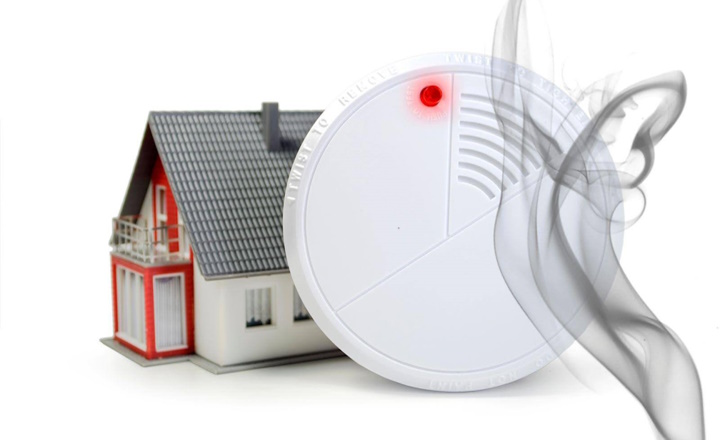
Smoke alarms are one of the most critical safety devices in any home, providing early warning that can mean the difference between life and death in a fire emergency. For Brisbane residents in areas like Darra, Jindalee, Ipswich, and surrounding suburbs, understanding proper smoke alarm installation is essential for protecting your family and property.
Understanding Brisbane's Smoke Alarm Requirements
Current Legislation and Compliance
Queensland has some of the most stringent smoke alarm laws in Australia. Since January 2017, all new dwellings and substantially renovated homes must have photoelectric smoke alarms that are either hardwired or powered by a 10-year lithium battery.
These alarms must be interconnected so that when one alarm activates, all alarms in the dwelling will sound.
For existing homes, there's a phased implementation schedule:
January 1, 2027: All Queensland homes must comply with current smoke alarm laws
Properties being sold or leased for the first time must already comply
Rental properties have specific compliance deadlines based on their type
Types of Smoke Alarms Available
Photoelectric Smoke Alarms
These are now the required standard in Queensland. They detect smoke particles more effectively than ionisation alarms and are less prone to false alarms from cooking or steam. They're particularly effective at detecting slow-burning, smouldering fires that produce large smoke particles.
Ionisation Smoke Alarms
While still legal in existing installations until 2027, these older-style alarms are being phased out. They respond faster to fast-flaming fires but are more susceptible to false alarms.
Combination Alarms
Some units combine smoke detection with carbon monoxide detection, heat detection, or emergency lighting features.
Why Professional Installation Matters
Technical Expertise and Precision
Professional smoke alarm installation involves far more than simply mounting a device to your ceiling. Licensed electricians possess the technical knowledge to assess your home's unique characteristics, including:
Airflow patterns that could affect smoke detection
Ceiling height variations that impact alarm placement
Structural considerations for optimal mounting
Electrical system integration for hardwired units
Interconnection requirements for multi-alarm systems
Compliance with Australian Standards
Brisbane's smoke alarm installations must comply with Australian Standard AS3786 and the Queensland Building Fire Safety Regulation 2008. Professional electricians stay current with these evolving standards, ensuring your installation meets all legal requirements.
Key compliance areas include:
Correct alarm positioning relative to walls, corners, and air vents
Proper height placement (typically 300-500mm from wall junctions)
Appropriate spacing in larger rooms
Integration with existing electrical systems
Documentation and certification of installation
Complex Installation Scenarios
Multi-Story Homes
Homes with multiple levels require careful planning to ensure smoke can be detected quickly regardless of where a fire starts. Professional installers understand the principles of smoke movement in multi-story buildings and can design systems that provide comprehensive coverage.
Open-Plan Living Areas
Modern Brisbane homes often feature large, open-plan living spaces that present unique challenges for smoke detection. The placement of alarms in these areas requires expertise to ensure adequate coverage without creating dead zones where smoke might not be detected promptly.
Heritage and Older Properties
Older Brisbane homes may have unique architectural features, limited electrical infrastructure, or heritage restrictions that complicate smoke alarm installation. Professional electricians can navigate these challenges while maintaining both safety and aesthetic considerations.
Optimal Placement Strategies for Brisbane Homes
Room-by-Room Installation Guide
Bedrooms and Sleeping Areas
Install alarms inside each bedroom
Place additional alarms in hallways leading to sleeping areas
Consider the impact of air conditioning on smoke movement
Account for ceiling fans that might disperse smoke
Living Areas and Kitchens
Position alarms away from cooking areas to minimise false alarms
Consider the Queensland climate's impact on humidity and condensation
Account for natural ventilation patterns common in Brisbane homes
Ensure coverage of entertainment areas where electrical equipment is concentrated
Stairways and Corridors
Install at the top and bottom of staircases
Ensure corridor alarms can detect smoke from adjacent rooms
Consider the stack effect in multi-story Brisbane homes
Environmental Considerations for Brisbane
Brisbane's subtropical climate presents unique challenges for smoke alarm installation:
Humidity Management
High humidity can affect alarm sensitivity and lead to false alarms. Professional installers understand how to position alarms to minimise humidity-related issues while maintaining effectiveness.
Seasonal Variations
Brisbane's distinct wet and dry seasons can impact air movement patterns in your home. Professional installers consider these seasonal variations when positioning alarms.
Ventilation Integration
Many Brisbane homes rely on natural ventilation. Alarm placement must account for ceiling fans, open windows, and cross-ventilation patterns that are common in the region.
Installation Process and Best Practices
Pre-Installation Assessment
A thorough pre-installation assessment includes:
Electrical system evaluation to make sure of compatibility with hardwired alarms
Structural assessment to identify optimal mounting locations
Airflow testing to understand smoke movement patterns
Compliance review to ensure all legal requirements are met
Future-proofing considerations for potential home modifications
Professional Installation Steps
Planning and Design: Creating a comprehensive alarm layout plan
Electrical Preparation: Running new circuits if required for hardwired systems
Mounting and Positioning: Precise placement according to manufacturer specifications
Interconnection Setup: Linking all alarms for simultaneous activation
Testing and Commissioning: Comprehensive system testing
Documentation: Providing compliance certificates as well as user instructions
Quality Assurance and Testing
Professional installers conduct extensive testing, including:
Individual alarm function tests
Interconnection verification
Battery backup testing (for hardwired units)
Sensitivity calibration
Integration with existing home automation systems
Maintenance and Long-Term Care
Regular Testing Schedule
Monthly Testing Test each alarm by pressing the test button. This should produce a loud, clear alarm sound. If any alarm fails to sound or produces a weak sound, the unit needs immediate attention.
Annual Professional Inspection Have your smoke alarm system professionally inspected annually to ensure:
All units are functioning correctly
Interconnection systems are working properly
Battery backups are operational
Units haven't reached their replacement date
Battery Maintenance
10-Year Lithium Batteries Modern photoelectric alarms typically use sealed 10-year lithium batteries. These cannot be replaced – when the battery begins to fail (indicated by regular chirping), the entire unit must be replaced.
Backup Batteries in Hardwired Systems Hardwired alarms typically have 9V backup batteries that should be replaced annually or when the low-battery warning sounds.
Replacement Guidelines
10-Year Rule All smoke alarms should be replaced every 10 years, regardless whether or not they appear to be functional. This is because the sensor components degrade over time, potentially reducing the alarm's sensitivity.
Signs of Needed Replacement
Regular false alarms
Failure to sound during testing
Visible damage or discoloration
Age approaching 10 years
Persistent chirping despite battery replacement
Cost Considerations and Value
Investment in Safety
While professional installation involves upfront costs, it represents excellent value when considering:
Life safety protection for your family
Property protection from fire damage
Insurance compliance requirements
Legal compliance avoiding potential fines
Resale value impact on property value
Long-Term Financial Benefits
Reduced Insurance Premiums Many insurance companies offer discounts for homes with professionally installed, compliant smoke alarm systems.
Avoided Penalties Non-compliance with Queensland smoke alarm laws can result in significant fines. Professional installation ensures compliance from the start.
Prevented Losses The cost of installation is minimal compared to potential losses from fire damage that could have been prevented by early detection.
Choosing the Right Professional Smoke Alarm Installation Service
Qualifications to Look For
When selecting an electrician for smoke alarm installation in Brisbane, ensure they have the following:
Current electrical license for Queensland
Smoke alarm installation certification
Insurance coverage for their work
Local knowledge of Brisbane building codes
Experience with your home type (heritage, modern, multi-storey, etc.)
Questions to Ask Potential Installers
Are you licensed to perform electrical work in Queensland?
Do you provide compliance certificates for smoke alarm installations?
What warranty do you offer on your installation work?
How do you handle the interconnection of multiple alarms?
Can you provide references from recent Brisbane installations?
Do you offer ongoing maintenance services?
Emergency Preparedness Beyond Smoke Alarms
Comprehensive Fire Safety Planning
While smoke alarms are crucial, they're part of a broader fire safety strategy:
Escape Planning
Develop and practice family escape plans
Ensure all family members know multiple exit routes
Designate a meeting point outside your home
Consider escape routes from upper floors in multi-story homes
Fire Prevention
Regular electrical system maintenance
Proper storage of flammable materials
Kitchen fire safety practices
Heating system maintenance and inspection
Additional Safety Equipment
Fire extinguishers in key locations
Fire blankets for kitchen fires
Emergency lighting systems
First aid supplies are readily accessible
To Summarise
Professional smoke alarm installation is an investment in your family's safety that pays dividends in peace of mind and protection. For Brisbane residents, the combination of legal requirements, unique climate considerations, and the complexity of modern interconnected systems makes professional installation not just advisable but essential.
By working with qualified local electricians who understand local requirements and conditions, you ensure your smoke alarm system provides optimal protection while meeting all compliance requirements. Don't compromise on safety; invest in a professional smoke alarm installation and maintain your system properly to protect what matters most.
Remember that smoke alarms are your first line of defence against fire, but they're only effective if they're properly installed, maintained, and integrated into a comprehensive fire safety plan. Take action today to ensure your Brisbane home is properly protected.
| < Prev | Next > |
|---|




